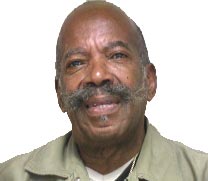A
Jamaican in the British RAF
- Alford Gardner’s
Tale
Alford Gardner's Story - A Jamaican man's account
of what life was like in the British Forces.
 Joining up in 1944 Joining up in 1944
Alford Gardner was a youngster looking for the chance
to see more of the world, like countless others
in the war years. So when the RAF arrived on the
island of Jamaica on their latest recruitment drive,
he joined up as soon as he was old enough. For
him and thousands of other eager young men it was
an opportunity too big to pass. This was their
chance to experience a bigger world, whilst doing
a much-needed duty for their ‘mother country’ -
the hope of learning to fly and fight the Germans
was a tantalising prospect.
Alford already knew the sacrifices that are part
and parcel of military life - his father saw action
in the First World War alongside 15,000 other West
Indians troops.(1) After going through a series of
selection procedures, Alford was one of 13 men who
were signed up in June 1944.
From Guantanamo Bay to Greenland
His journey from Jamaica began on the SS Cuba, which
took a storm-lashed two weeks before arriving at
the first stop off point at Guantanamo Bay. After
reaching the US, he joined other recruits and continued
on to England via Greenland. Experiencing sub-zero
temperatures for the first time turned out to be
an eye-watering episode: ‘About 4 days out
of England, it got cold. …Everything covered
in ice. That was the first frost we’d run into.
Lads went down and put on their long johns. No matter
what you put on, it was still cold.’
Liverpool at last
Alford’s first views of England took in smoking
chimney stacks across the Liverpool skyline, as far
as the eye could see: ‘What a lot of factories!
That was the first impression.’ From there
he was transferred to Filey, where training began
in earnest with 12 weeks ‘square-bashing’.
Alford’s contribution to the war effort was
directed to ground personnel duties in Yorkshire.
By the time he arrived, opportunities for flying
were few and far between for West Indian volunteers.
He was selected for training as a motor mechanic
and it was his job to get motor cabs running and
keep them in good working order.
The colour bar
Although black communities had existed in port cities
like Liverpool and Bristol for nearly 400 years,
outside of these areas black faces were a rarity.
Filey residents were about to meet black British
subjects for the first time. Alford recounts how
locals were perplexed to see so many black people
in large numbers. ‘There were just about
1000 of us, and so many different colours. That
was one of the things that baffled them, so many
shades of black and they were all talking the same
way, all Jamaicans’. Occasionally, he and
other West Indian recruits would come across trouble
in the local bars: ‘You find the odd times,
there had to be a little skirmish. It happened
because someone would say something out of turn.’
Face to face with the enemy
Despite being limited to crew duties in the UK, Alford
came into contact with Germans who had been taken
as prisoners of war. He remembers one individual
in particular who was assigned to cleaning duties: ‘He
had had half his face shot away. He was a good lad
and I had the task of asking him to do things. He
knew the job.’
By the time Alford started his career in the RAF,
there were only months left before the war would
end. The cease of hostilities marked the beginning
of a different chapter in Alford’s life. For
an 18 year old Jamaican man, post war Britain held
new challenges and battles in the years to come.
Rosie Hopley
First published on the LHI site www.lhi.org.uk
1. Experiences of in the WW1 black armed forces
http://www.movinghere.org.uk/galleries/histories/caribbean/settling/ww3.htm
|




